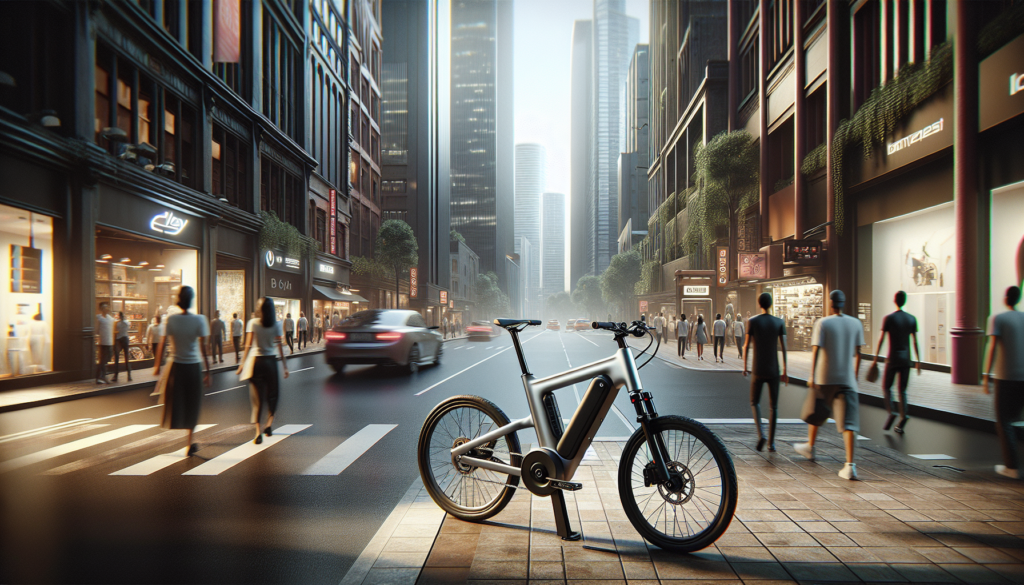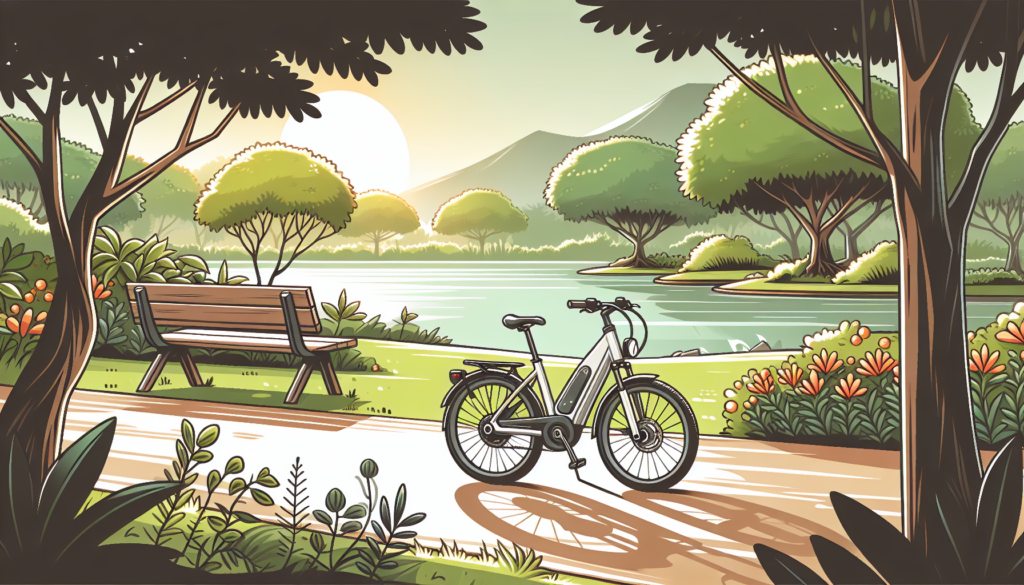
In the world of electric bicycles, choosing the right model can be a game changer for your commuting and recreational needs. Today, we delve into a comprehensive comparison between two standout options: the Xiaomi Ebike Himo Z20 and the ADO A20 Lite. Both e-bikes offer impressive features that cater to various riding preferences, but each has its own unique strengths. The Xiaomi Ebike Himo Z20, known for its robust build and dual electrical assist modes, presents a compelling option for those looking for versatility.
On the other hand, the ADO A20 Lite from EKO Life MY stands out with its lightweight design and three electrical assist modes, making it an attractive choice for urban riders. Let’s explore these options further to help you make an informed decision on which e-bike best suits your lifestyle.
Overview of Xiaomi Ebike Himo Z20 Features
The Xiaomi Ebike Himo Z20 offers a remarkable riding experience with its dual electrical assist modes—Dynamic Sports Mode and Cool Mode—allowing users to choose their preferred riding style. Equipped with a 36V 10Ah Li-ion battery, the Xiaomi Ebike Himo Z20 boasts an impressive range of about 60km, making it ideal for both everyday commuting and leisurely rides. Additionally, the ebike supports a maximum load of 100kg, catering to a variety of body types and carrying needs. Weighing 21.6kg, it is relatively lightweight for its category. Its chain system and mechanical disc brakes ensure reliability and control on various terrains, all priced competitively at RM 3,099, making it an appealing option for e-bike enthusiasts.
In comparison, the ADO A20 Lite stands out with its 3 electrical assist modes, providing even more versatility during rides. Featuring a slightly lower capacity 36V 9.6Ah Li-ion battery, it shares the 60km range of the Xiaomi Ebike Himo Z20 but differentiates itself with a lighter frame, weighing only 16kg. This makes the ADO A20 Lite particularly attractive for those prioritizing portability. With a belt system and mechanical disc brakes, it also promises efficient performance and durability. At RM 3,699, while the ADO A20 Lite is pricier, its advanced features and lightweight design position it as a formidable contender against the Xiaomi Ebike Himo Z20.
Exploring the ADO A20 Lite: A Closer Look
The ADO A20 Lite stands out in the realm of electric bikes with its impressive lightweight design and efficient capability. Weighing only 16kg, this e-bike is one of the most portable options available, making it an excellent choice for riders looking for an easy-to-handle vehicle. With a 36V 9.6Ah Li-ion battery, the ADO A20 Lite provides a significant range of about 60 kilometers, allowing for extended rides without the frequent need to recharge.
It offers a versatile 3 electrical assist modes, catering to various riding preferences and ensuring a smooth experience whether you’re commuting or out for leisure. The mechanical disc brakes also ensure optimal stopping power, contributing to the safety and reliability of the ride. Its price of RM 3,699 positions it as a competitive entry in the market, especially given its blend of functionality and design. Moreover, the ADO A20 Lite features a belt system rather than a chain system, which minimizes maintenance and enhances durability over time.
Riders benefit from a quieter ride compared to traditional chain-driven bikes. With a maximum load capacity of 100kg, it accommodates a variety of riders and cargo, proving to be a versatile option for daily use. Its thoughtful engineering and user-friendly design make it appealing to both casual and serious cyclists, further distinguishing it from the Xiaomi Ebike Himo Z20, which, while robust, does not match the lightweight convenience and innovative features of the ADO A20 Lite.
Battery Performance: A Comparison of Ranges
When it comes to battery performance, both the Xiaomi Ebike Himo Z20 and the ADO A20 Lite make compelling choices for e-bike enthusiasts. The Xiaomi Ebike Himo Z20 is equipped with a robust 36V 10Ah Li-ion battery, offering a solid range of approximately 60km, which allows for extended rides without the constant worry of running out of power.
On the other hand, the ADO A20 Lite comes with a slightly lower 36V 9.6Ah Li-ion battery, but it matches the range of its competitor at around 60km as well. While both bikes offer comparable distance capabilities, the advantage of the ADO A20 Lite lies in its lightweight build of just 16kg compared to the Xiaomi Ebike Himo Z20’s 21.6kg, making it easier to maneuver and carry, especially for urban commuting.
Moreover, the ADO A20 Lite supports three electrical assist modes, which allows riders to choose a setting that fits their riding style, thereby optimizing battery usage during longer journeys. This feature can enhance the overall riding experience by allowing riders to balance performance and range conveniently. In contrast, the Xiaomi Ebike Himo Z20 features two assist modes, which can be sufficient for most users, but may feel limiting for those who like to fine-tune their ride. Ultimately, if battery performance is a key factor for you, the ADO A20 Lite not only matches the Xiaomi Ebike Himo Z20’s range but also offers superior functionality with its versatile assist modes.
Weight and Load Capacity: Which E-Bike Wins?

When it comes to e-bikes, weight and load capacity are crucial factors to consider for performance and convenience. The Xiaomi Ebike Himo Z20 weighs 21.6kg and has a maximum load capacity of 100kg, making it a sturdy option for various riders. Its robust build is reinforced by the chain system and mechanical disc brakes, ensuring reliability during rides. However, with a slightly heavier design, some riders might find it less portable, especially for urban commuting or when storing it in smaller spaces. In comparison, the ADO A20 Lite presents a more lightweight alternative at just 16kg, thus making it easier to handle, transport, and maneuver.
This e-bike also supports a maximum load of 100kg, providing the same capacity as the Xiaomi Ebike Himo Z20 while being significantly lighter. Its belt system offers smooth operation and lower maintenance, making it an attractive choice for riders who prioritize ease of use. Ultimately, if you are looking for a better portability option without sacrificing load capacity, the ADO A20 Lite stands out as the winner in this category.
Electrical Assist Modes: Dynamic vs Versatile Options
When comparing the Xiaomi Ebike Himo Z20 and the ADO A20 Lite, one of the key differences lies in their electrical assist modes. The Xiaomi Ebike Himo Z20 features a dual electrical assist mode, either the Dynamic Sports Mode for a thrilling ride or the Cool Mode for a more relaxed experience. This flexibility allows riders to choose their level of exertion and adapt to different terrains easily. The 36V 10Ah Li-ion battery provides a satisfactory range of about 60km, ideal for daily commutes or weekend adventures, accommodating a max load of 100kg.
In contrast, the ADO A20 Lite offers three distinct electrical assist modes that cater to a wider variety of riding preferences and conditions. This versatility empowers riders with more options to optimize their experience according to their needs, whether they crave a leisurely stroll or a brisk ride. Similar to the Himo Z20, the ADO A20 Lite also houses a 36V 9.6Ah Li-ion battery, ensuring an impressive range, with a max load of 100kg, but at a significantly lighter weight of 16kg. This makes the A20 Lite stand out as a favorable choice for users seeking versatility in their electric biking experience.
Breaking Down the Braking Systems: Mechanical Disc in Focus
When it comes to electric bikes, the braking system is a crucial component that ensures safety and performance. Both the Xiaomi Ebike Himo Z20 and the ADO A20 Lite feature mechanical disc brakes, which offer reliable stopping power in various weather conditions. The Himo Z20’s mechanical disc setup is robust and ensures that riders feel confident when navigating through urban environments or rugged terrains. Weighing in at 21.6kg, it handles well, thanks in part to its effective braking system that can accommodate a maximum load of 100kg, making it suitable for both leisure rides and daily commutes.
In contrast, the ADO A20 Lite, which is lighter at 16kg, also sports mechanical disc brakes which enhance its agile handling. The ADO A20 Lite’s slightly refined braking system yields more responsive feedback, especially under aggressive riding conditions. Although both e-bikes share similar specifications in terms of weight capacity, the ADO A20 Lite offers an increased performance angle thanks to its belt system, making it quieter and requiring less maintenance than chain systems. Each bike presents unique advantages, but the balance of weight and performance in the ADO A20 Lite truly enhances the riding experience.
Price Analysis: Value for Money Insight
When it comes to purchasing an electric bike, the price is always a significant factor to consider. The Xiaomi Ebike Himo Z20 is priced at RM 3,099, making it an attractive option for those looking for a reliable and feature-rich e-bike. With a robust 36V 10Ah Li-ion battery offering a range of about 60km, it presents good value considering its dynamic sports mode and mechanical disc brakes. Weighing in at 21.6kg, this model is built for performance but may not be the lightest option on the market. The Himo Z20’s features and pricing position it as a solid investment for casual riders and enthusiasts alike.
In contrast, the ADO A20 Lite is slightly more expensive at RM 3,699, yet it offers some unique advantages worth considering. This model comes equipped with three electrical assist modes, allowing for greater flexibility in how you ride. Its lighter weight of 16kg makes it easier to handle and transport, while the 36V 9.6Ah Li-ion battery provides a comparable range of about 60km. Additionally, the belt system in the ADO A20 Lite promises lower maintenance over time, showcasing it as the better long-term investment despite its higher initial price. Therefore, while both e-bikes are competitive in their own right, the ADO A20 Lite stands out by providing enhanced features and performance.
User Experience and Customer Feedback
When it comes to user experience, both the Xiaomi Ebike Himo Z20 and ADO A20 Lite exhibit commendable features as per customer feedback. The Xiaomi Ebike Himo Z20 impresses users with its dual electrical assist modes, catering to riders who prefer a dynamic sports experience or a more relaxed approach with its cool mode.
With a robust 36V 10Ah Li-ion battery, it offers a commendable range of about 60km, and customers appreciate the comfort it provides even during longer rides. However, some users note that at 21.6kg, it can feel a bit cumbersome, especially for those accustomed to lighter e-bikes. The price point of RM 3,099 also makes it an attractive option for those looking for performance without breaking the bank.
On the other hand, the ADO A20 Lite stands out for its lighter weight of just 16kg, making it more manageable for daily commutes and urban rides. Riders enjoy the option of three electrical assist modes, providing flexibility depending on their journey needs. With a similarly impressive 36V 9.6Ah Li-ion battery and a range of about 60km, users appreciate the balance it strikes between performance and ease of use. Although priced slightly higher at RM 3,699, many customers believe the belt system and overall ride quality justify the investment, leading to favorable reviews and a growing loyal following among urban commuters.
Final Thoughts: Which E-Bike Reigns Supreme?

In assessing the Xiaomi Ebike Himo Z20 and the ADO A20 Lite, both models bring unique features that cater to different riding preferences. The Himo Z20 boasts a robust Dual electrical assist mode, making it a versatile option whether you’re in the mood for some dynamic sporty rides or smooth cruising. Its weight of 21.6 kg and a solid mechanical disc brake system promote a solid riding experience, complemented by a decent range of approximately 60 km on a full charge. However, at a price of RM 3,099, it sits at a more budget-friendly tier compared to some competitors.
On the other hand, the ADO A20 Lite edges ahead with its lightweight design, tipping the scales at just 16 kg, making it an ideal choice for urban commuters who prioritize portability and ease of handling. With 3 robust electrical assist modes, it appeals to riders wanting customized performance options. Though it carries a slightly higher price of RM 3,699, the efficient belt system and mechanical disc brakes enhance its appeal. In the end, both e-bikes cater to distinct riding styles but if lightness and customization are at the forefront of your priorities, the ADO A20 Lite may just be the superior choice for your biking adventures.

I wish the blog had a clearer summary of what to expect. It made me curious but left me wondering what’s inside.
Dear Wong Siew Fan, thank you for sharing your thoughts with us. We understand that you were expecting a clearer summary. At Eko Life Malaysia, we strive to make our content engaging and informative. We’ll take your feedback into consideration and work on enhancing our blog summaries to meet our readers’ expectations. If you have any specific suggestions or would like to know more about a particular topic, please don’t hesitate to contact us at [email protected] or +60 3-7890 3042. We appreciate your feedback and hope to see you on our blog again soon!
Having a brief intro is always a good start. Hope the blog delivers on its promises and keeps me entertained.
Hello Ng Mei Lin, we’re glad you found the brief intro engaging! At Eko Life Malaysia, we strive to deliver quality content that not only informs but also entertains. We appreciate your feedback and hope you enjoy the rest of our blog. If you have any suggestions or need further clarification on any of our posts, please don’t hesitate to reach out to us via [email protected] or +60 3-7890 3042.
I love the tone of the blog. Sounds engaging and interesting! Can’t wait to dive into the detailed content.
Hi Mohamed Fitri Ali, thank you for loving our blog’s tone! We’re glad you’re excited about diving into the content. We put in a lot of effort to make it engaging and informative. If you have any questions or need help with anything, please don’t hesitate to reach out to us at [email protected] or call us at +60 3-7890 3042. We’re looking forward to hearing your thoughts after reading the full blog.